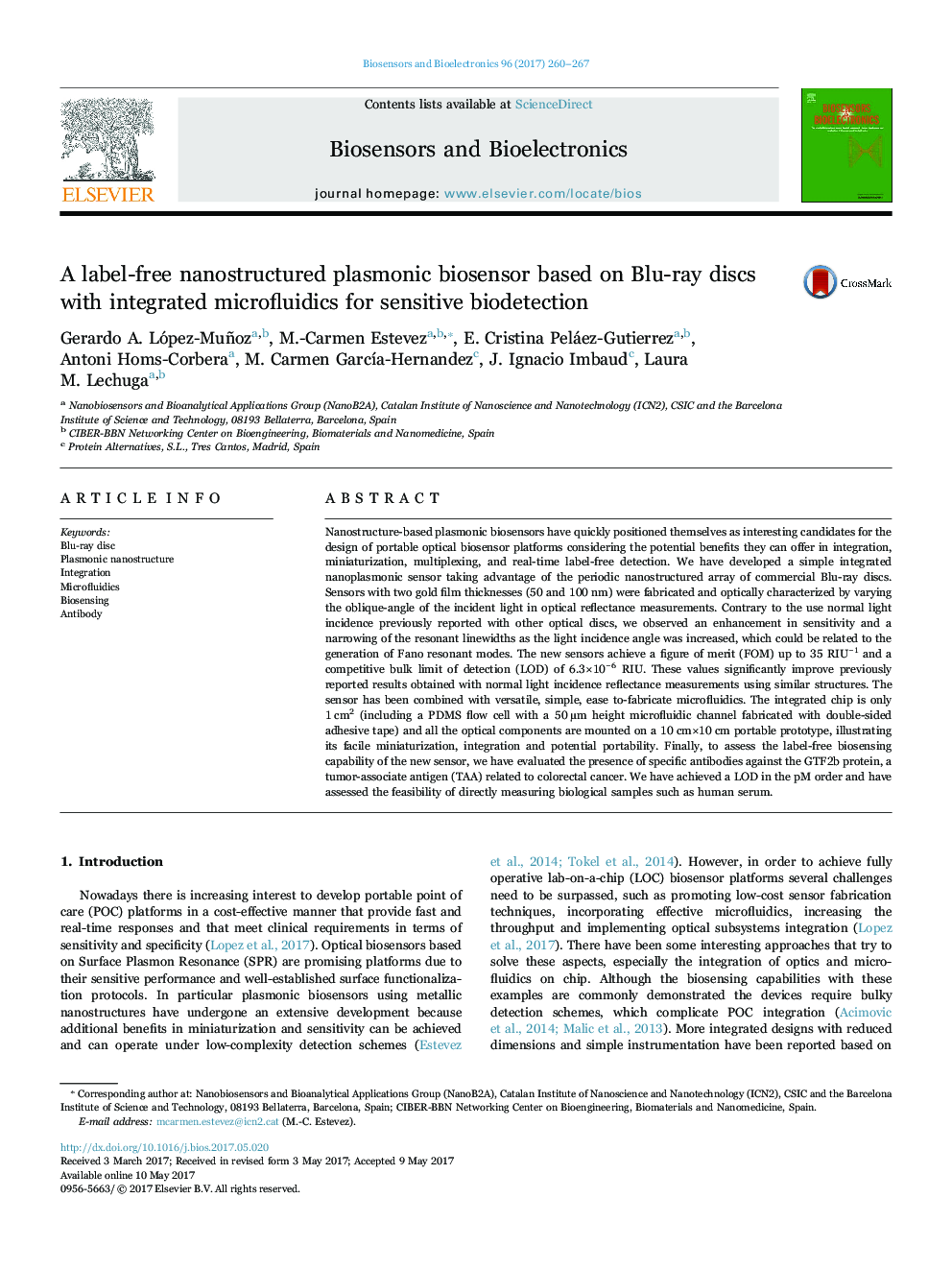| Article ID | Journal | Published Year | Pages | File Type |
|---|---|---|---|---|
| 5030863 | Biosensors and Bioelectronics | 2017 | 8 Pages |
Abstract
Nanostructure-based plasmonic biosensors have quickly positioned themselves as interesting candidates for the design of portable optical biosensor platforms considering the potential benefits they can offer in integration, miniaturization, multiplexing, and real-time label-free detection. We have developed a simple integrated nanoplasmonic sensor taking advantage of the periodic nanostructured array of commercial Blu-ray discs. Sensors with two gold film thicknesses (50 and 100 nm) were fabricated and optically characterized by varying the oblique-angle of the incident light in optical reflectance measurements. Contrary to the use normal light incidence previously reported with other optical discs, we observed an enhancement in sensitivity and a narrowing of the resonant linewidths as the light incidence angle was increased, which could be related to the generation of Fano resonant modes. The new sensors achieve a figure of merit (FOM) up to 35 RIUâ1 and a competitive bulk limit of detection (LOD) of 6.3Ã10â6 RIU. These values significantly improve previously reported results obtained with normal light incidence reflectance measurements using similar structures. The sensor has been combined with versatile, simple, ease to-fabricate microfluidics. The integrated chip is only 1 cm2 (including a PDMS flow cell with a 50 µm height microfluidic channel fabricated with double-sided adhesive tape) and all the optical components are mounted on a 10 cmÃ10 cm portable prototype, illustrating its facile miniaturization, integration and potential portability. Finally, to assess the label-free biosensing capability of the new sensor, we have evaluated the presence of specific antibodies against the GTF2b protein, a tumor-associate antigen (TAA) related to colorectal cancer. We have achieved a LOD in the pM order and have assessed the feasibility of directly measuring biological samples such as human serum.
Related Topics
Physical Sciences and Engineering
Chemistry
Analytical Chemistry
Authors
Gerardo A. López-Muñoz, M.-Carmen Estevez, E. Cristina Peláez-Gutierrez, Antoni Homs-Corbera, M. Carmen GarcÃa-Hernandez, J. Ignacio Imbaud, Laura M. Lechuga,
